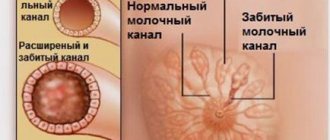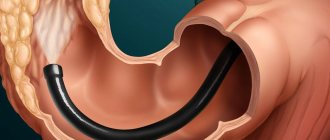Description
The prevalence of fibromyalgia in the population is from 1% to 8%; women are mainly affected by this syndrome. Fibromyalgia can be idiopathic, when it is not combined with another pathology, and secondary, if it is diagnosed together with any clinical pathology (most often, a chronic disease). Since 1984, the term central sensitivity syndrome has been proposed as a pathological concept that includes various processes with similar characteristics, including fibromyalgia, chronic fatigue syndrome and others.
Picture 1
Symptoms of fibromyalgia
In order to understand what kind of disease this is, we will first focus on the fact that the leading symptom of fibromyalgia is generalized pain, i.e. pain in at least four of five regions, which include the two upper, two lower extremities and the patient's body. And here we need to delve deeper into the process of the occurrence and perception of pain. It turns out it's not that simple: pain can occur on several levels. The first - quite understandable - is irritation of peripheral nerve endings. Let's say a person is cut or burned, or his joint becomes inflamed or an ulcer forms in his stomach - in all cases, his pain endings will be irritated. This is a nociceptive pain, the name of which comes from nocens “harmful”. But this pain is not so harmful - it warns us of danger. The peculiarity of nociceptive pain is that the patient clearly localizes it, and it is directly related to the area of damage and inflammation. Another type of pain is neuropathic. Our nerves are a unique structure, many of them resemble electrical wires. In the center of the nerve there is a conductor through which an electrical impulse passes, just like in wires, and the entire nerve is covered with an “insulator” - the myelin sheath, which prevents loss of electricity and the development of “short circuits”. In case of damage to the nerve itself or the myelin sheath, when the nerve becomes “exposed”, the development of pain syndrome is also possible.
However, with neuropathic pain, no visible changes are observed, movements in the joints are often completely preserved, but in the innervation zones, hypersensitivity may develop, or, on the contrary, it will decrease. A feature of this type of pain is its clear correspondence to the location of the nerve structures. A classic example of neuropathic pain is peripheral neuropathy, where the pain syndrome develops symmetrically in a “gloves and socks” pattern. Such damage can occur with diabetes or alcoholism.
Another example is radiculopathy, where there is compression of a nerve root, often at the lumbar level. Then the pain literally “shoots” throughout the entire leg, for example, along its outer surface, reaching the heel. Another classic example of neuropathic pain is carpal tunnel syndrome, which is associated with compression of the median nerve at the level of the palmar surface of the wrist. In this case, the patient will consult a doctor with complaints of a “burning” in the area of the I-IV fingers, again without any external changes in the joints.
The third type of pain is dysregulatory. Previously, it was also called psychogenic pain, but this name did not justify itself, because The patient does not always have some mental characteristics. To understand the reason for the development of this type of pain, we need to remember that all our sensations are analyzed at the level of the brain.
So if the eyes see some object, then the visual analyzer recognizes that it is, for example, a table made of wood, located three meters from the person. In the same way, the auditory analyzer recognizes the melody and hears the playing of individual musical instruments. Similarly, at the level of the brain, there is an analyzer of pain signals in our body. And due to various circumstances, there may be an increase in the activity of this zone, which is why a feeling of generalized pain arises.
Disputes about the causes of this phenomenon continue. There is an indication of understandable “organic” reasons. For example, there may be changes in blood flow activity in certain areas of the brain, which is why pain throughout the body (fibromyalgia) is so common in older people.
Organic reasons also include changes in the concentration of mediators: it is known that serotonin is the hormone of pleasure, and norepinephrine is the hormone of stress and decreased sensitivity to pain. Violation of the concentration of these substances will also lead to pain, although we will not be able to confirm this at the examination level, because the concentration of hormones in the peripheral blood does not correspond to their concentration in the brain.
But there is another theory that explains the development of generalized pain through various psychological disorders. It is well known that with anxiety and depression, pain in the body often appears.
Unfortunately, there is another category - hysterical patients who talk about the presence of pain throughout the body and, due to this, try to manipulate the environment (relatives, less often colleagues) in order to get “benefit” from their illness. The “benefit” may involve avoiding household or professional responsibilities. Such patients, and more often female patients, also try to manipulate the doctor so that he “shows” her loved ones how sick she is.
But fibromyalgia is more than just common body pain. Fibromyalgia is often accompanied by other symptoms. The patient may feel severe fatigue and may wake up completely unrested during the night. Cognitive impairment gradually increases: the patient has problems with memory and performing some mental operations. And, as a rule, body pain is accompanied by many other symptoms: abdominal discomfort (which is why gastroenterologists often diagnose irritable bowel syndrome), headache, numbness, dizziness, dry eyes, constipation, nausea, loss of appetite, painful urination, etc.
Fibromyalgia is very common: every eighth to tenth patient sees a rheumatologist.
Such a high frequency is due to the fact that fibromyalgia does not exclude, but, on the contrary, can accompany other diseases, for example, rheumatoid arthritis, osteoarthritis.
Symptoms
Fibromyalgia manifests itself as generalized chronic musculoskeletal pain (pain in the muscles and/or bones) , along with stiffness and other symptoms that affect the organs and systems of the body. The most common symptoms are: intestinal pain, headaches, tachycardia, menstrual irregularities, shortness of breath, insomnia, anxiety, depression and bad mood, problems with cognitive memory, attention and concentration . There is also severe fatigue and easy fatigability
FAQ
How to treat fibromyalgia?
The disease is treated comprehensively using various methods. These include drug therapy, work with a psychologist and physical exercise. But the most important thing for the patient is to be aware of the problem and want to cope with it.
How does fibromyalgia manifest?
When diagnosed with fibromyalgia, pain may be felt in the back, neck, chest, hips, and knee joints. It also manifests itself as sleep disturbances, anxiety, and somatic problems.
Can fibromyalgia be cured?
If the diagnosis is made correctly and treatment is started, most often this disease can be overcome, and in other cases the condition can be significantly alleviated.
Causes
There are currently no generally accepted causes of fibromyalgia. There are several theories:
- Current research supports the theory that many of the signs and symptoms of fibromyalgia may be related to dysfunction of the central nervous system, which contributes to impaired sensory stimulation.
- Also, modern research recognizes a strong connection between fibromyalgia and diseases of the central nervous system.
- In particular, there is evidence of neuroendocrine and autonomic impairment in fibromyalgia, with symptoms very similar to those described by patients with filum terminale disease. This has led other authors to propose that, at least in a certain percentage of patients, fibromyalgia may be an epiphenomenon of filum terminale disease.
-According to the Filum System® method:
In some cases of fibromyalgia, it is observed that this syndrome is associated with asynchronous growth of the spinal cord (and with it the central nervous system) and the spine during the embryonic development phase. This provokes the appearance of abnormal tension in the spinal cord, which is transmitted by a tense and short filum terminale from the coccyx to the skull. In this case, it is believed that abnormal tension of the filum terminale may be a cause of predisposition to the development of fibromyalgia syndrome.
Treatment of fibromyalgia and chronic fatigue syndrome
The pain associated with fibromyalgia can almost always be relieved. Sometimes this can be troublesome, the process of selecting a treatment regimen may require more time, but treatment of fibromyalgia is real. In most cases, pain with fibromyalgia begins to subside after 2-4 weeks if 3 issues are resolved: a full night's sleep with the phases of slow-wave sleep and REM sleep represented, treatment of inflammatory triggers (autoimmune processes and infections - these are usually visible in test results), recovery normal functioning of the immune system. Why exactly 2-4 weeks? This is due to the lifespan of certain immune system cells, antibodies and other factors that support inflammation.
Prognosis for treatment of fibromyalgia. In most cases, after three or four months, you can gradually reduce your medication dosage. As physiological regulation is restored, the need for treatment gradually decreases, until all medications are completely withdrawn. Difficulties in treatment are possible if some factor continues to act on the body, again triggering fibromyalgia. For example, relapses of fibromyalgia are observed against the background of chronic viral hepatitis, when it is not possible to completely destroy the virus, in the case of “major” psychiatric pathology (schizophrenia, endogenous depression), but in these cases clinical improvement is possible, although it requires a little more effort.
Diagnostics
Symptoms of fibromyalgia may come and go in cycles. This fact, coupled with the lack of established tests to make a diagnosis, hampers the diagnostic process, resulting in a delay in the implementation of existing treatments. The American College of Rheumatology proposed criteria for diagnosing fibromyalgia syndrome in 1990, which are still in effect today. In 2010, new criteria were proposed, which are still at the approval stage. The Filum System® method, in light of the fact that several cases of fibromyalgia have coincided with the diagnosis of Filum Terminale Disease, suggests an MRI of the brain and spine to check for the presence of signs of spinal cord tension.
Diagnosis of the disease
Fibromyalgia can be difficult to diagnose because many diseases have similar symptoms. For example, hypothyroidism, vitamin D deficiency, hypercalcemia, polymyositis (muscle disease), Paget's disease (bone disease), as well as oncology and infectious diseases (hepatitis, AIDS, etc.). Therefore, studies and extensive tests are carried out, first of all, to exclude these pathologies. There are no specific methods for establishing the diagnosis of fibromyalgia; it can be suspected based on the patient’s complaints and his physical examination. Experts identify 18 tender points at the tendon attachment points, which can cause pain when pressed. If 11 or more points react, fibromyalgia is suspected.
Factors influencing the development of fibromyalgia
Major risk/susceptibility factors for fibromyalgia:
- Female gender: This disease is most common in women (female/male ratio 6/1).
- Age: Fibromyalgia can appear at any age, but its incidence increases over the years.
- Genetic factor/Family predisposition: The development of fibromyalgia occurs more often if one of the relatives suffers from this syndrome. In addition, the tension on the spinal cord caused by an over-tight filum terminale (filum terminale disease) is a congenital condition and can be inherited.
- Stress: It has been proven that physical or psychological stress can trigger the onset of fibromyalgia.
- Other Factors: There have been a few cases of bacterial or viral infections, injuries, and other diseases (such as rheumatoid arthritis or lupus) that were not the cause of fibromyalgia but did cause symptoms typical of fibromyalgia.
Causes of the disease
Despite the high modern level of medicine, the causes of fibromyalgia in people are still not completely clear. Many experts tend to consider this condition as an abnormal reaction of the body to external and internal stimuli, in which the sensitivity of the nervous system sharply increases, manifested by the occurrence of pain. Most often it is expressed in the area of the back of the head and neck, shoulder joints and chest, lower back and hips, as well as at the level of the knees. But no histological changes are detected in tissues and bones. Based on the observations of doctors, risk factors such as hereditary predisposition, infections in the body, physical trauma and emotional shock, disruptions in the endocrine system and autoimmune conditions can contribute to the onset of the disease. Fibromyalgia in children, if it develops, is more often in adolescence, which is due to hormonal changes and psycho-emotional instability characteristic of this age.
Complications
- Impaired quality of life: Symptoms of general pain and chronic fatigue in fibromyalgia may wax and wane. Symptoms that affect cognitive abilities may be associated with chronic pain, which can trigger the development of depression and/or anxiety. All this affects the deterioration of the quality of life of patients who are limited in their activity and experience frustration due to a lack of understanding of the causes of their condition, which can lead to the growth and development of symptoms
- Chronic pain: Muscle and bone pain, headaches, abdominal pain and general pain may become frequent or constant, complicating the patient's condition.
Treatment of chronic fibromyalgia of the back
There are no universal methods of treating the disease. Symptomatic treatment is used with medications and the use of non-drug methods. It is recommended to live in a dry, warm climate, concentrate on positive thinking, eliminate stress factors as much as possible, and actively counteract the symptoms of pathology.
Conservative therapy
For fatigue, apathy, and increased anxiety, antidepressants (Amitriptyline) are prescribed. But tricyclic antidepressants do not completely relieve pain. The use of anticonvulsants (Lyrica) is not justified in all patients and does not always give the desired effect, as it provokes side effects in the form of sudden changes in weight, constant drowsiness, swelling and dizziness.
Antidepressant drugs from the class of serotonin reuptake inhibitors (Cymbalta, Savella). Reduce back pain and improve overall well-being. Side effects from taking it include: nausea, lack of sleep, dizziness.
For fibromyalgia, NSAIDs (Ibuprofen, Naproxen) are not effective, since there is no inflammation in the muscle tissue. Muscle relaxants (Mydocalm) help relieve muscle spasms and improve sleep. Recently, methods of injecting steroids and Botox into tender points have been used, but their effectiveness is controversial. Although Botox has proven itself well as a treatment option.
Alternative Treatments
Manual therapy for back pathologies helps a patient with fibromyalgia recover faster and feel better. The following methods have proven to be effective:
- Electrophoresis with the introduction of drugs through the skin.
- Taping, using special adhesive tapes, helps relieve pain in the back muscles.
- Osteopathy.
- Shock wave therapy.
Chronic fibromyalgia of the back is successfully treated with acupuncture, acupuncture changes the metabolism in brain cells and develops tolerance to muscle pain. Manual therapy reduces muscle pain in the back and increases the range of motion in the spinal column. Classic and acupressure massage provokes a rush of blood to problem areas and reduces muscle spasms.
Exercise therapy (physical therapy) helps restore neurochemical connections and creates a positive attitude. Improves the functioning of the heart and blood vessels, increases the level of endorphins, which have analgesic properties, relieve stress, and relieve depression. Exercise therapy improves mental and physical well-being, promotes restful sleep and relaxation of the body.
Chronic fibromyalgia of the back is a disease with a changing course and difficult diagnosis. It has a poor prognosis, worsening as the patient ages. You can conduct a full diagnosis and undergo effective treatment at Dr. Dlin’s clinic. Call us to make an appointment at a time convenient for you.
Fibromyalgia Treatment
There is no specific treatment for this disease. Today, treatment is carried out to reduce pain and other symptoms to improve the patient's quality of life. Currently, the following specialties are involved in the treatment of fibromyalgia syndrome: general and clinical medicine, rheumatology, rehabilitation medicine, physiotherapy, psychology, dietetics, etc. In our specialty, neurosurgery, since the publication of a study conducted by Dr. Mantia and his colleagues in 2015, which looked at the use of the Filum System® method and concluded that patients who have undergone surgery show better results using physical therapy, provided that Since the presence of filum terminale disease is confirmed, we believe that some patients with fibromyalgia syndrome may be caused by filum terminale disease. Since 1993, with the publication of the doctoral dissertation of Dr. Royo Salvador, who linked the tension of the entire nervous system with the filum terminale as the cause of several diseases, a new treatment method that is etiological, that is, acting on the cause of the development of the disease. With surgical cutting of the filum terminale using the Filum System® method, the tension force responsible for this pathological mechanism is eliminated. Our dissection technique is minimally invasive, indicated in all cases of filum terminale disease and is recommended to be used as early as possible because it stops further development of the disease with minimal risks.
Treatment of fibromyalgia
Treatment of fibromyalgia is complex and requires a comprehensive approach. Drug therapy involves the prescription of antidepressants, muscle relaxants, and B vitamins. However, without affecting trigger zones, the effectiveness of drug therapy is low and relapses occur quickly. Good results are obtained by: - blockade of trigger points according to D. Travell and D. Simons; - reflexology; - manual therapy, massage. An important component of treatment and prevention of relapse requires strict adherence to sleep and rest patterns.
Dissection of the filum terminale using the Filum Sistem method
Advantages
1. The tension on the spinal cord caused by a too short or tight filum terminale is eliminated.
2. Using the minimally invasive surgical technique of the Chiari Institute of Barcelona, the surgical time is 45 minutes. Stay in the hospital for about a day. The post-operative period is short and without serious restrictions. No admission to the intensive care unit. No blood transfusion.
3. Its use reduces the risk of mortality to zero. No serious complications.
4. Improves symptoms and stops the development of pathologies associated with filum terminale disease.
Diagnosis of fibromyalgia.
Diagnosing fibromyalgia is extremely difficult
, mainly because the disease does not give clear signals.
Its most characteristic symptom is pain in the pain points, the sensitivity of which is measured by the doctor with a device called a dolorimeter.
The specialist diagnoses the disease based on typical symptoms and excessive pain (at least 11 out of 18).
To make a final diagnosis, it is necessary to conduct a detailed interview with the patient. Rheumatologists are most often involved in diagnosing and treating the disease, although patients often visit their primary care physician.
Bibliography:
- Cazzola M, Sarzi Puttini P, Stisi S, Di Franco M, Bazzichi L, Carignola R, Gracely RH, Salaffi F, Marinangeli F, Torta R, Giamberardino MA, Buskila D, Spath M, Biasi G, Cassisi G, Casale R, Altomonte L, Arioli G, Alciati A, Marsico A, Ceccherelli F, Leardini G, Gorla R, Atzeni F, Italian Fibromyalgia Network (2008) Fibromyalgia syndrome: definition and diagnostic aspects. Reumatismo 60(Suppl.1):3-14.
- Claw DJ (2009) Fibromyalgia: an overview. Am. J Med 122:S3–S13.
- Crofford LJ (1998) Neuroendocrine abnormalities in fibromyalgia and related disorders. Am J Med Sci 315:359–366
- Demitrack M, Crofford L (1998) Evidence for and pathophyiologic implication of hypothalamic-pituitary-adrenal axis dysregulation in fibromyalgia and chronic fatigue syndrome. Ann NY Acad Sci 840:684–697
- Forseth KO, Gran JT, Husby G (1997) A population study of the incidence of fibromyalgia among women aged 26-55 yr. Brit J Rheumatol 36:1318–1323.
- Goldenberg DL (2009) Diagnosis and differential diagnosis of Fybromialgia. Am J Med 122:S14–21.
- Yunus MB (2008) Central Sensitivity syndromes: a new paradigm and group nosology for fibromyalgia and overlapping conditions, and the related issue of disease versus illness. Semin Arthritis Reum 37:339–352.
- Kwiatek R, Barnden L, Tedman R, Jarrett R, Chew J, Rowe C, Pile K (2000) Regional cerebral blood flow in fibromyalgia: single-photon-emission computed tomography evidence of reduction in the pontine tegmentum and thalami. Arthritis Rheum 43:2823–2233.
- Mantia R., Di Gesù M., Vetro A., Mantia F., Palma S., Iovane A. Shortness of filum terminale represents an anatomical specific feature in fibromyalgia: a nuclear magnetic resonance and clinical study. Muscles Ligaments Tendons J. 2015 Mar 27;5(1):33-7.
- Mountz JM, Bradley LA, Modell JG, Alexander RW, Triana-Alexander M, Aaron LA, Stewart KE, Alarcón GS, Mountz JD (1995) Fibromyalgia in women. Abnormalities in regional cerebral blood flow in the thalamus and caudate nucleus are associated with low pain thresholds. Arthritis Rheum 38:926.
- Murga I et al. Cambios en la resonancia cerebral asociados al syndrome de fibromialgia. Med Clin (Barc). 2021.
- Royo Salvador MB (1996), Siringomielia, escoliosis y malformación de Arnold-Chiari idiopáticas, etiología común (PDF).REV NEUROL (Barc); 24 (132): 937-959.
- Royo Salvador MB (1996), Platibasia, impresión basilar, retroceso odontoideo y kinking del tronco cerebral, etiología común con la siringomielia, escoliosis y malformación de Arnold-Chiari idiopáticas (PDF). REV NEUROL (Barc); 24 (134): 1241-1250
- Dr. Miguel B. Royo Salvador (1997), Nuevo tratamiento quirúrgico para la siringomielia , la escoliosis , la malformación de Arnold-Chiari , el kinking del tronco cerebral, el retroceso odontoideo, la impresión basilar y la platibasia idiopáticas (PDF). REV NEUROL; 25 (140): 523-530
- M. B. Royo-Salvador, J. Solé-Llenas, J. M. Doménech, and R. González-Adrio, (2005) “Results of the section of the filum terminale in 20 patients with syringomyelia , scoliosis and Chiari malformation .” (PDF). Acta Neurochir (Wien) 147:515–523.
- M. B. Royo-Salvador (2014), “Filum System® Bibliography” (PDF).
- M. B. Royo-Salvador (2014), “Filum System® Guía Breve.”
- Staud R (2008) Autonomic dysfunction in fibromyalgia syndrome: postural orthostatic tachycardia. Curr Rheumatol Rep 10:463–466.
- Tanriverdi F, Karaca Z, Unluhizarci K, Kelestimur F (2007) The hypothalamo-pituitary-adrenal axis in chronic fatigue syndrome and fibromyalgia syndrome. Stress 10:13–25.
- Winfield JB (2007) Fibromyalgia and related central sensitivity syndromes: twenty-five years of progress. Semin Arthritis Rheum 36:335–338.
- Wolfe F, Smythe HA, Yunus MB, Bennet RM, Bombardier C, Goldenberg DL et al. The American College of Rheumatology 1990 Criteria for the Classification of Fibromyalgia. Arthritis Rheum. 1990;33:160-72.
FIBROMYALGIA SYNDROME: CLINICAL, DIAGNOSIS, TREATMENT
The paper gives detailed information on the fibromyalgia syndrome: clinical manifestations, diagnosis and treatment. Fibromyalgia (FM) is a common disorder characterized by pain, aching, stiffness of trunk and extremities, and presence of trigger points. More common in woven that men. N.V. Chichasova – Department of Rheumatology MMA named after. THEM. Sechenov, Moscow NV Chichasova – Department of Rheumatology, IMSechenov Moscow Medical Academy
WITH
Fibromyalgia syndrome (MF) is an extra-articular disease characterized by diffuse pain, fatigue of skeletal muscles and a decrease in the pain threshold during palpation in characteristic places designated as “tender points”. Although SF, also described in the literature under the names generalized tendomyopathy and fibrositis, is a relatively new disease for rheumatologists in most countries, this symptom complex, referred to as muscular rheumatism, was mentioned in European literature back in the 17th century. The absence of signs of an inflammatory process in the muscles during a morphological study excluded the use of the term “fibrositis,” so in the last decade the name of this pathology as fibromyalgia syndrome has taken root in the literature. Particular attention to SF in the last 15 years is due to its high prevalence; now it is one of the most common diseases in outpatient practice, ranking 2nd - 3rd among all reasons for visiting a rheumatologist. In domestic practice, this diagnosis is almost never made, since SF is still little known to doctors. The diagnostic criteria of the American Rheumatological Association (ARA) in 1990 were the first to define this syndrome as an independent disease, which can occur both in isolation and against the background of other diseases that involve muscle damage (endocrine pathology, rheumatological diseases, etc.).
Diagnostic criteria for SF (APA, 1990).
1. History of generalized pain: Definition: diffuse pain in the left or right half of the body, above or below the waist, or axial pain (in the neck, in the anterior chest wall, in the back). The duration of the pain syndrome is more than 3 months. The presence of other clinical pathology does not exclude the diagnosis of SF. 2. Pain in 11 of 18 points upon palpation (see Fig. 1). Finger pressure should correspond to 4 kg, a positive response is considered only the occurrence of pain, and not sensitivity: bilaterally in the occiput of the suboccipital muscle; bilaterally in the neck at the level of C5 – C7; bilaterally in the middle of the upper border of the trapezius muscle; bilaterally above the scapula at the medial edge of m. supraspinatus; bilaterally at the osteochondral joint of the 2nd rib; bilaterally in the upper outer quadrate of the buttocks; bilaterally posterior to the trochanter; bilaterally proximal to the knee joint (in the middle of the fat pad) SF occurs predominantly in women aged 30–50 years, the ratio of women to men is 5–10: 1. As a rule, the syndrome develops among people with intellectual work. The development of SF in old age and childhood is described. In children (94% are girls), SF usually occurs during puberty; only isolated cases of SF have been reported under the age of 13 years. The onset of the disease, as a rule, is gradual with a slow increase in pain over many years, so that the first visit of patients with SF to a doctor occurs 8–10 years after the onset of the disease. SF can develop for no apparent reason, but its onset can mainly be associated with physical or mental stress or climate change. Table. Differential diagnosis for SF
| Manifestations | Nosological forms | Signs excluding SF |
| Joint pain, feeling of stiffness, swelling in the joints, morning | Rheumatoid arthritis, seronegative spondylitis | Clinical signs of arthritis, accelerated ESR, detection of rheumatoid factor |
| Muscle pain | Inflammatory myopathies | Increased levels of muscle enzymes (CPK, myoglobin, transaminases) |
| Muscle pain, sensitivity to cold | Hypothyroidism, thyroiditis | Decreased thyroid function, detection of autoantibodies to thyroid tissue |
| Back pain, stiffness | Ankylosing spondylitis | X-ray signs of sacroiliitis, spondylopathy, HLA-B 27 |
| Pain in the lower back and limbs | Osteocondritis of the spine | X-ray signs and clinical picture of radicular syndrome |
| Musculo-articular syndrome, sicca syndrome, Raynaud's syndrome | Diffuse connective tissue diseases | Objective clinical and laboratory data |
| Pain in muscles, joints, fatigue, decreased performance | Viral infection, paraneoplastic syndrome | Objective clinical, laboratory and instrumental data |
The etiological factors of SF are unknown. There are suggestions about its connection with a chronic active viral infection caused by the Epstein-Barr virus, but there is no documented evidence of this hypothesis in the literature yet. A very interesting fact is that among patients with HIV infection, SF is detected in 11% of cases and most often among people with a significantly longer period of infection and who have had episodes of depression in the past. Preliminary reports indicate a possible connection between the development of SF and herpes virus type 6, paravirus B19, and Lyme borreliosis. The most common symptoms of SF are generalized pain and skeletal muscle fatigue, stiffness, and poor sleep. Muscle pain is most often localized in the neck and shoulders, back, lower back, and somewhat less frequently - in the limbs, the area of the anterior chest wall. Stiffness is noted by 70% of patients, usually in the morning and evening hours, its duration can vary from 1 to 24 hours (on average about 10 hours). Unlike rheumatoid arthritis, stiffness in SF does not correlate with the severity of symptoms (severity of pain). A state of general fatigue in the absence of obvious causes is very common in patients and can be aggravated by poor sleep, which is observed in 60–80% of patients. Studies using spectral analysis of sleep phases with EEG have shown that in patients with FS, an alpha rhythm is detected during the NREM phase of sleep, i.e., “non-restorative sleep” occurs, the appearance of which coincides with an increase in muscle pain. Lack of a feeling of rest after sleep is noted by up to 100% of patients with SF. Specific to C is the detection of possible painful points in certain anatomical locations (see figure), of which 18 localizations (9 each on the right and left side), occurring with the greatest frequency, were selected for diagnostic criteria. In clinical practice, these points are determined by palpation, the pressure force should not exceed 4 kg (usually pressure with such force leads to whitening of the tip of the nail phalanx), or using a dolorimeter device, which allows you to apply a dosed load in the area of painful points. The use of this device objectifies and differentiates the diagnosis. Controlled studies have shown that patients with FS are more sensitive to dolorimeter pressure than healthy people or patients with rheumatoid arthritis. As a rule, in patients with FS, pain occurs with pressure in the area of painful points with a force of less than 2 kg (sometimes 200 - 300 g), and in the control group - 6 - 8 kg. Painful points are usually detected symmetrically on both halves of the body, their number may vary depending on external factors. Cold, damp weather, the winter season, morning hours, and emotional stress provoke an increase in generalized pain and a decrease in the pain threshold in the area of specific points. Calming factors, on the contrary, include warm, dry weather, summer, rest, and local application of heat. Approximately 1/3 of the patients note subjective sensations of swelling in the joints and numbness of the extremities, which are not confirmed by objective examination. In 20% of patients, “fibrotic nodules” can be identified in the peri-sacral region, in the upper part of the buttocks, often painful, although histologically they represent fibro-fatty tissue without signs of inflammation. More than half of patients with SF have various so-called functional disorders, in which the severity of complaints does not correspond to organic lesions and the course of the disease depends on the psychosocial situation. They often tend to become chronic and are poorly controlled by treatment measures.
The most common functional disorders in SF
• the cardiovascular system:
hyperkinetic syndrome, cardialgia, heart rhythm disturbances (sinus tachycardia, paroxysmal tachycardia and tachyarrhythmia, extrasystole), hypotension, labile hypertension, syncope, Raynaud's syndrome;
• gastrointestinal tract:
irritable stomach syndrome (non-ulcer dyspepsia), irritable bowel syndrome;
• respiratory system:
neurotic respiratory syndrome (hyperventilation syndrome);
• urogenital system:
irritable bladder (dysuria), dysmenorrhea;
• functional headache
(migraine);
• sleep disorders;
Significantly more often than healthy individuals, patients with FS experience vegetative and functional symptoms: • cold hands and/or feet; • dry mouth and eyes (“dry syndrome” with a positive Schirmer test); • hyperhidrosis (usually of the hands), increased sweating; • dermographism; • orthostatic disorders. Typically, at least 3 functional or autonomic disorders are identified in patients with SF. The frequent detection of various psychological disorders in SF has led to the existence of an opinion about SF as a variant of psychosomatic disorders or one of the manifestations of somatized depression, since it was depressive states that were most often recorded in patients with SF using the MMPI test (the most common questionnaire identifying psychological disorders, such as hysteria, depression, anxiety, etc.). Along with depression, in the group of patients with FS (compared to patients with rheumatoid arthritis and healthy individuals), an increase in the frequency of anxiety disorders and hypochondria is detected. However, in the first months of the disease it is not possible to identify psychological disorders in patients with FS, and when the disease is more than 2 years old, they occur in 2/3 of patients. Families of patients with FS have a higher incidence of major affective disorders.
Psychological status in SF
• major psychological disorders: depression, hypochondria, anxiety; • by the time they consult a doctor, 30–60% of patients have psychological disorders (with rheumatoid arthritis – 7%); • when the duration of the SF disease is less than 2 years, psychological disorders are practically not detected. Until now, there is no unambiguous view of depression as a cause or consequence of SF. An interesting fact is that in SF there is an inversely proportional relationship between the concentration of tryptophan in the blood plasma and the severity of muscle pain, which supports the hypothesis about the role of serotonin deficiency, resulting from a defect in amino acid homeostasis, in the development of SF. The mechanisms of development of algic syndrome in SF can be varied, especially since no pathological changes in muscles and ligaments were detected by light microscopy. The most frequently discussed mechanisms of pain development are: Mechanisms of pain development in SF:
• nociceptor pain – increased sensitivity of pain receptors in response to endogenous algic agents; • neurogenic inflammation associated with the release of neuropeptides from the peripheral endings of primary sensory neurons (substance P, neurokinin A, etc.); • neuropathic pain that occurs with tunnel syndromes; • reactive pain in response to dysfunction of the motor system and muscle hypertonicity; • central mechanism of pain as a result of decreased inhibitory control of synchronous neurons; • psychosomatic pain as pain that occurs during emotional depression or social stress. Laboratory studies of inflammatory, biochemical, immunological, and hormonal parameters in SF do not find any deviations from the norm. Thus, the diagnosis of SF at this stage is a clinical diagnosis. Anamnesis is of great importance for the diagnosis of SF: the connection between the onset of the disease and its subsequent exacerbations with stress, slow onset, absence of long-term remissions (painless intervals in SF in 85% of cases are no more than 6 weeks). Nevertheless, the differential diagnosis includes a fairly large range of pathological conditions.
Differential diagnosis of SF
• inflammatory diseases of joints and muscles (rheumatoid arthritis, seronegative spondylitis, polymyositis); • diffuse connective tissue diseases; • endocrine diseases (hypothyroidism, thyroiditis, diabetic polyneuropathy); • degenerative diseases of the spine; • metabolic myopathies (enzyme defects, changes in serum K levels, vitamin D deficiency, etc.); • viral diseases; • paraneoplastic syndrome; • drug myopathies (corticosteroids, anesthetics, clofibrate, allopurinol, chloroquine, D-penicillamine, vincristine, L-tryptophan, aminocaproic acid, etc.). Detection of objective clinical, laboratory or instrumental data characteristic of diseases whose symptom complex includes myalgic syndrome, or anamnestic data on the possibility of developing iatrogenic myopathy exclude the diagnosis of SF (see table).
Treatment of SF
Treatment of SF is quite a difficult task. The long-term, often erased clinical picture, the lack of epidemiological studies, and insufficient awareness of doctors about this syndrome lead to patients going from doctor to doctor. Comments like “You have nothing”, “You are a hypochondriac”, “You are faking”, “This is hysteria” are well known to patients with FS. Treatment of these patients must begin with establishing a diagnosis and explaining their condition. If possible, they correct provoking factors and give recommendations on regimen and behavior. Taking a warm bath in the morning, removing additional stress, and organizing rest can already give patients relief. Therapy for SF when the etiopathogenetic factors are unknown is symptomatic and is directed against the leading symptoms: pain, fatigue, sleep disturbances and psychological disorders. Physiotherapeutic activities
Unfortunately, they provide a short-term effect; in a fairly high percentage of cases (up to 40%), they may be accompanied by undesirable reactions (tachycardia, hypertension or hypotension, extrasystole, dizziness).
The purpose of physiotherapy for SF: 1. Reduce pain (baths, massage, Vimoton, infrared rays, cryotherapy). 2. Decreased muscle tone (high-frequency, mid-frequency and low-frequency electric waves, baths, massage, Vimoton). 3. Relaxation of connective tissue (ultrasound). 4. Hyperemization of muscles (infrared rays). 5. Improving muscle function (neopharadic threshold waves, isometric training, Vimoton). The effectiveness of thermal procedures was noted in 30–40% of patients, massage – in 20%, sunbathing – in 12%, and exercise therapy – in 9% of patients (in SF, group exercise therapy is more effective than individual exercise therapy). The positive effect in only 1/3 of patients lasts more than 1 month; it usually lasts for 1–4 weeks (in 30% of patients) or for several days and even hours (in 37% of patients). Manual therapy, as a rule, causes increased pain in SF; acupuncture is extremely rarely effective. Pharmacotherapy for SF is aimed primarily at pain relief. Analgesics used for SF:
• central action (tramadol); • peripheral action (anti-inflammatory drugs, paracetamol); • auxiliary analgesics (antidepressants, neuroleptics, muscle relaxants). The prescription of non-hormonal and hormonal anti-inflammatory drugs, as well as local anesthesia of pain points has practically no effect; only a short-term reduction in pain can be observed in the first 2 to 3 days of treatment. The number of drugs prescribed to improve sleep is also limited. Sedative-hypnotics are not indicated because they tend to reduce stages III and IV sleep. The analgesic effect of antidepressants has been known since their use in clinical practice; later they began to be used to treat all types of chronic pain. Their analgesic effect is realized through: 1) addition of phase IV sleep; 2) an effect on the metabolism of serotonin, leading to an increase in the production of endorphins; 3) influence on pain peptides; 4) influence on the synthesis of kinins and prostaglandins. Taking into account the frequent detection of depressive states in patients with FS, antidepressants have been widely tested for this disease. It is noted that it is advisable to start therapy with low doses of tricyclic (amitriptyline 10 - 25 mg per day) or tetracyclic (ludiomil 25 - 50 mg per day) antidepressants, gradually increasing the daily dose to 50 and 75 mg, respectively, which is tolerated by a large number of patients. It is advisable to begin this therapy in a hospital setting with intravenous administration in combination with antipsychotics (haloperidol or tizercin) in initially low doses. The clinical effect is manifested by a decrease in pain, the number of painful points, and an improvement in sleep quality, but it persists only during treatment.
Rice. 1. Painful points that are most specific for SF
The use of cyclobenzaprine, which has not only a muscle relaxant, but also a mild antidepressant effect, in daily doses of 10–30 mg leads to a decrease in diffuse pain, the number of painful points, improved sleep, a decrease in stiffness, fatigue, and anxiety. Tizanidine, prescribed at 6–12–16 mg per day, also demonstrated distinct analgesic properties in SF. Our trial of tramadol in FS showed its effectiveness in more than 60% of patients. It is interesting to note that most patients with FS notice a decrease in pain 3–5 days after starting to take tramadol at a daily dose of 100 mg, which suggests that the analgesic effect of the drug in SF is not realized through central mechanisms (while pain relief occurs after 15–30 minutes ), but through the effects of tramadol on serotonin receptors. By a month of continuous therapy, not only the levels of pain and stiffness are significantly reduced, but also sleep and the psychological state of patients improve, and performance increases. If there is no clinical effect from taking the drug at a dose of 100 mg per day, the dose of tramadol is increased by 50 mg once every 1-2 weeks to 200-300 mg per day, which allows achieving an effect in a number of patients. Long-term therapy (4–6 months) leads to a decrease in the severity of autonomic and functional disorders, restoration of the normal level of the pain threshold in the area of painful points (in 15–20% of patients). After tramadol withdrawal, the clinical effect in most cases lasts 1–6 months, after which a slow increase in the manifestations of FS is observed. The drug is well tolerated in SF. It should be noted that most pharmacotherapeutic measures are effective in patients with FS in approximately 50% of cases, provide temporary improvement, and drug-induced remission of the disease is extremely rare. Apparently, it is necessary to combine the efforts of specialists in various fields (therapists, neurologists, orthopedists, psychologists and psychiatrists) to understand this disease and develop treatment programs.
Literature:
1. A.M. Wayne. “Vegetative disorders.” Moscow, 1997. 2. N.V. Chichasova. “Primary fibromyalgia: clinical manifestations, diagnosis and treatment.” Ter. Archiv 1994;11:89–93. 3. N.V. Chichasova, E.L. Nasonov, E.V. Igolkina. “Fibromyalgia syndrome in different age groups.” Pediatric Rheumatology 1996;1:26–9. 4. Bengtsson A, Henriksson KG, Larsson J. Muscle biopsy in primary fibromyalgia. Scand. J Rheumatology 1986;15:1–6. 5. Muller W. Generalisierte Tendjmiopathie (Fibromialgie, Steinkopff Verlag Darmstadt, 1990. 6. Wolf F, Smithe HA, Yunus MB, et al. The American College of Rheumatology 1990 criteria for the classification of fibromyalgia and analogues. Arthritis and Rheumatism 1990; 33:160–72 7. Yunus MB, Ahies TA, Aldag JC, Masi A. Clinical features in primary fibromyalgia: Relationship with psychologic status. Arthritis and Rheumatism 1991;34:15–21.










